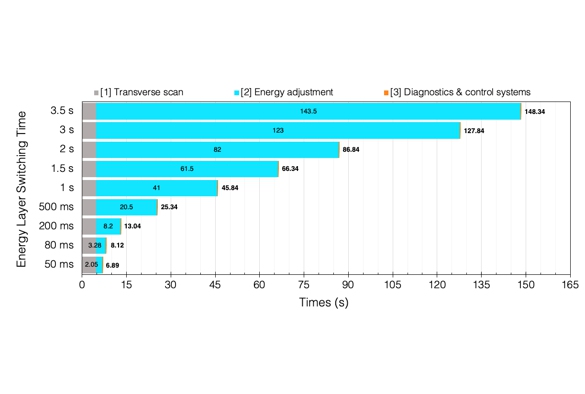OMA Fellows make their mark on special issue of Frontiers in Oncology

Two years after its official conclusion, the OMA project is still leaving an imprint on the medical science community through the continuous research of its former fellows and the steady publication of their work.
The journal Frontiers in Oncology (with an impact factor of 6.244) has produced a special issue on Next Evolutions in Charged Particle Therapy, with contributions from four former OMA Fellows.
Jacinta Yap and Andrea de Franco lead the special issue with a review article on the Future Developments in Charged Particle Therapy. In this article, the authors review the recent literature and latest developments on beam delivery and the factors which contribute to treatment time. They study the limitations of current technologies, and avenues for improvements in the area of accelerators, energy layer switching time, beam delivery systems, motion management and treatment efficacy. New developments and improvements are necessary to delivery faster and more effective treatments and they discuss emerging applications like FLASH and arc therapy.
In another article in the same issue, Laurent Kelleter and co-workers investigate the suitable detection angles for carbon-ion radiotherapy monitoring. The monitoring of inter-fractional anatomical changes is crucial to ensure the dose conformity, to potentially reduce the size of the safety margins around the tumor and ultimately to reduce the irradiation of healthy tissue. In this work, the detection and localization of a small 2mm-thick air cavity on a PMMA head phantom using secondary-ion tracking were investigated at different detection angles.
The significance of the cavity detection was found to increase at smaller detection angles, while the accuracy of the cavity localization was improved at larger detection angles. Detection angles of 20° – 30° were found to be a good compromise for accessing both, the detectability and the position of the air cavity along the depth in the head of a patient.
Finally, Michelle Lis, is the first author of a paper on the dosimetric validation of a system to treat moving tumors using scanned ion beams. The researchers validated a dose delivery system that synchronizes the movement of the ion beam to that of a moving target in a test phantom. Measured and calculated dose distributions revealed that this system satisfactorily compensated for target motion in the presence of beam range changes due to target motion. The implication of this finding is that the prototype system is suitable for additional preclinical research studies, such as irregular anatomic motion.
Full article references:
Yap Jacinta, De Franco Andrea, Sheehy Suzie
Future Developments in Charged Particle Therapy: Improving Beam Delivery for Efficiency and Efficacy
Frontiers in Oncology 11, 780025 (2021)
https://doi.org/10.3389/fonc.2021.780025
Ghesquière-Diérickx Laura, Schlechter Annika, Félix-Bautista Renato, Gehrke Tim, Echner Gernot, Kelleter Laurent, Martišíková Mária
Frontiers in Oncology 11, 780221 (2021)
https://doi.org/10.3389/fonc.2021.780221
Lis Michelle, Newhauser Wayne, Donetti Marco, Wolf Moritz, Steinsberger Timo, Paz Athena, Graeff Christian
Frontiers in Oncology 11, 712126 (2021)